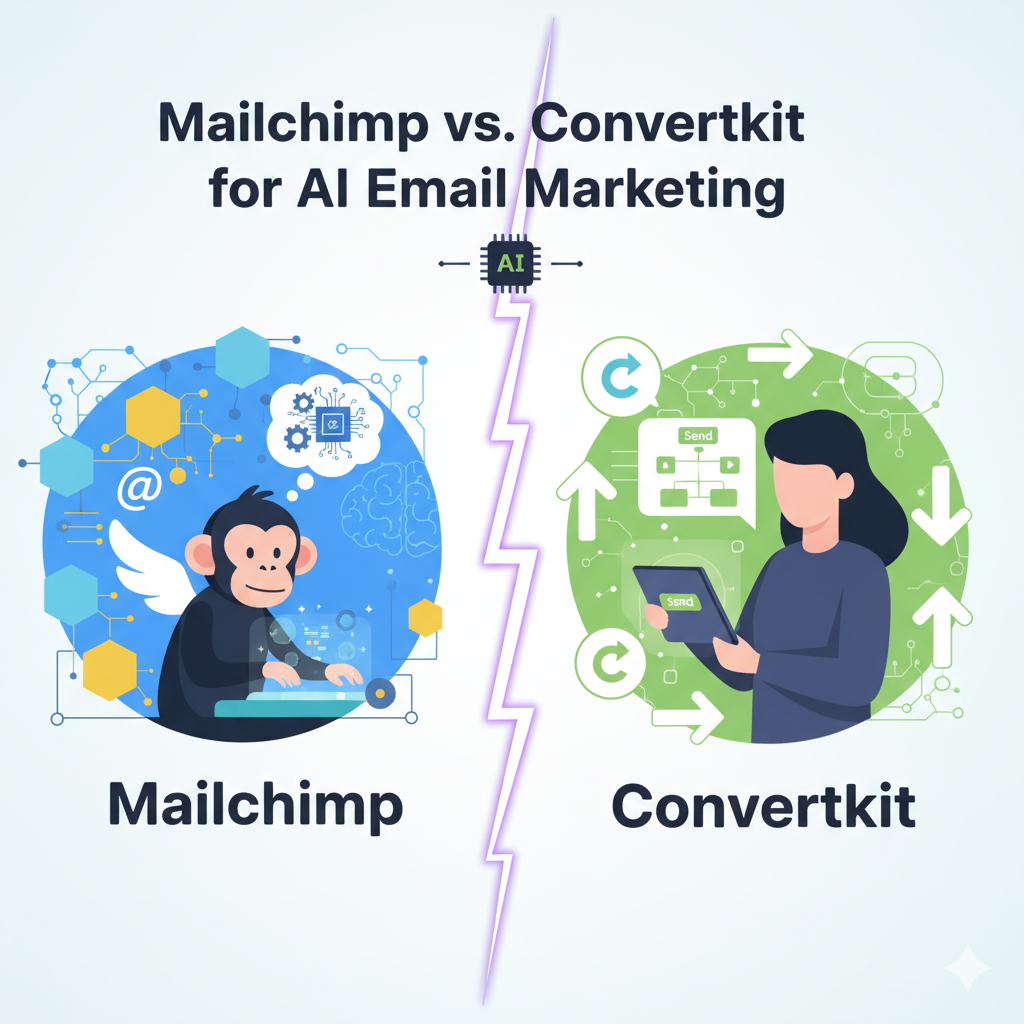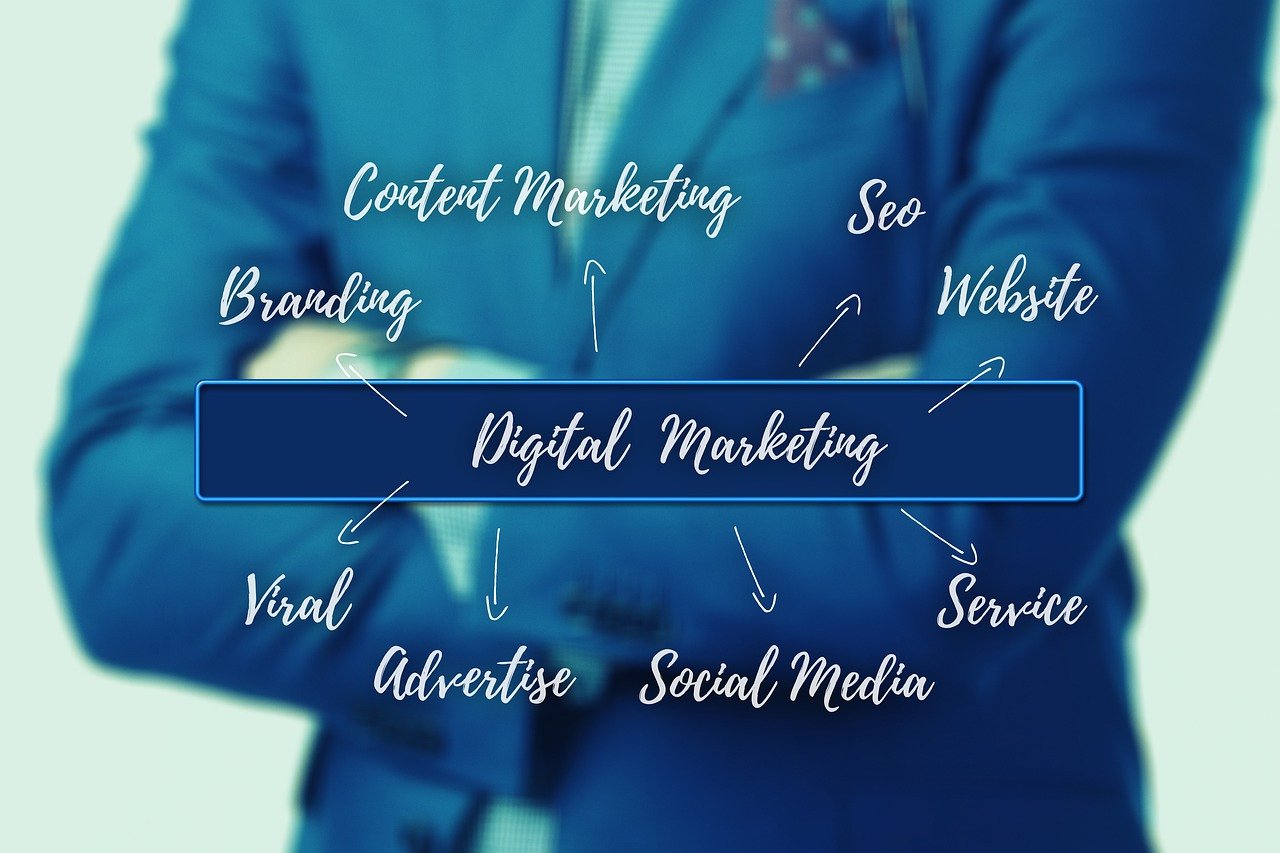Choosing the right email marketing platform could make or break your AI-powered campaigns, but most businesses don’t realize how dramatically these platforms differ in their artificial intelligence capabilities—and one clear winner emerges when you dig deeper.
Read our email comparison piece here: https://amzoraltd.com/klaviyo-ai-email-marketing-pricing-plans-with-feature-comparison/
Key Takeaways:
- Mailchimp delivers more AI-driven features for email marketing compared to ConvertKit, including GPT-based content generation and real-time optimization tools
- ConvertKit focuses on visual automations and primarily manual content creation, with limited AI capabilities compared to Mailchimp
- Mailchimp’s Standard plan, starting at $20 monthly, includes AI-powered send-time optimization, which aims to improve open rates by predicting the best time to send emails based on subscriber behavior
- Small businesses seeking AI-powered growth will find Mailchimp’s Creative Assistant and Content Optimizer more valuable than ConvertKit’s template-based approach
Email marketing success increasingly depends on artificial intelligence capabilities that can create compelling content, optimize timing, and predict customer behavior. While both platforms offer automation features, the depth of AI integration varies significantly between these two popular email marketing solutions.
Mailchimp Delivers
More AI Features
Than ConvertKit
The email marketing landscape has shifted toward AI-powered solutions that handle content creation, timing optimization, and customer insights automatically. Mailchimp stands out with its suite of artificial intelligence tools designed specifically for marketing professionals and small businesses looking to scale their email campaigns efficiently.
ConvertKit, originally built for content creators and bloggers, focuses primarily on visual automation builders and manual content creation processes. While effective for basic email sequences, it lacks the sophisticated AI capabilities that modern businesses need to compete in crowded inboxes. Content Marketing Agent specializes in helping businesses navigate these technology decisions and optimize their marketing technology stack for maximum ROI.
The difference becomes apparent when examining how each platform approaches content creation, design automation, and customer intelligence. Mailchimp’s investment in machine learning and natural language processing creates a more complete solution for businesses seeking AI-driven growth.
Content Creation: Advanced AI vs Basic AI Integration
1. Mailchimp’s GPT-Based Content Generator Creates Email Copy Instantly
Mailchimp’s Email Content Generator uses GPT-based AI to generate content variations based on user inputs; availability may vary. This system analyzes millions of successful email campaigns to generate subject lines, body copy, and call-to-action text that resonates with specific audience segments.
The AI content generator considers factors like seasonal trends, industry benchmarks, and recipient behavior patterns to create personalized messaging at scale. Users input basic campaign parameters, and the system produces several content options ranked by predicted performance metrics.
2. Content Optimizer Analyzes Tone, Layout, and CTAs in Real-Time
Beyond content generation, Mailchimp’s AI Content Optimizer provides real-time analysis of existing email copy elements. The system evaluates tone consistency, layout effectiveness, and call-to-action placement while offering specific improvement suggestions based on performance data from similar campaigns.
This optimization tool reviews subject line effectiveness, preview text engagement potential, and overall message structure. It identifies opportunities to improve readability scores, emotional appeal, and conversion-focused elements that directly impact campaign performance.
3. ConvertKit’s Limited AI Content Capabilities vs Manual Creation
ConvertKit primarily uses manual content creation with customizable templates, but lacks the AI-driven content generation and optimization found in Mailchimp. While the platform offers customizable email templates and a visual editor, it lacks integrated AI content generation or optimization features that automatically improve messaging effectiveness.
Users must create subject lines, body copy, and promotional content manually, relying on personal expertise rather than data-driven AI insights. This approach works for experienced marketers but limits scalability for businesses managing multiple campaigns or lacking extensive copywriting experience.
Design and Branding: Automated vs Template-Based
Creative Assistant Generates On-Brand Templates Automatically
Mailchimp’s Creative Assistant uses brand assets to automatically generate email templates that maintain visual consistency. This AI-powered design system creates multiple layout options that incorporate brand elements naturally while following design best practices.
The Creative Assistant adapts template designs based on content length, image placement requirements, and mobile optimization needs. It ensures brand consistency while reducing the time required to create professional-looking email campaigns from scratch.
ConvertKit’s Templates Offer Customization Without AI Assistance
ConvertKit offers customizable pre-built email templates, but lacks AI-powered brand integration. While these templates offer flexibility and customization options, they require manual design work and lack AI-powered brand integration or automated optimization features.
The template system works well for users comfortable with design principles but doesn’t provide the intelligent automation that busy marketers need to maintain consistent branding across multiple campaigns efficiently.
Smart Timing and Segmentation Capabilities
1. Predictive Send-Time Optimization Boosts Open Rates
Mailchimp uses AI to analyze subscriber behavior and predict optimal send times. This predictive send-time optimization system examines historical engagement data, time zone preferences, and device usage patterns to schedule email delivery when recipients are most likely to open and engage with content.
The system continuously learns from engagement metrics and adjusts timing recommendations based on changing subscriber behaviors. This personalized approach can improve open rates compared to standard broadcast timing methods.
2. AI-Driven Customer Lifetime Value Predictions
Mailchimp uses machine learning to predict customer lifetime value and purchase likelihood for better audience segmentation. These insights help marketers identify high-value prospects and customize messaging strategies based on predicted customer behavior patterns.
The AI system analyzes purchase history, engagement frequency, and interaction patterns to score leads and existing customers. This data enables more sophisticated segmentation strategies that improve conversion rates and customer retention efforts.
3. ConvertKit’s Visual Automations vs Mailchimp’s AI-Powered Timing
ConvertKit is strong in visual automation, enabling users to create email sequences based on subscriber actions. While powerful for creating logical automation flows, these systems rely on manual trigger setup rather than AI-powered timing optimization.
The visual automation builder helps users map customer journeys effectively, but timing decisions remain manual rather than data-driven. This approach works for straightforward sequences but lacks the sophisticated optimization that AI-powered systems provide.
Cost vs Value for Small Business AI Needs
Mailchimp’s Standard Plan Includes AI Features
Mailchimp’s Standard plan includes access to AI-powered features, including content generation, send-time optimization, and predictive analytics. This pricing structure makes advanced AI capabilities accessible to small businesses without requiring expensive enterprise-level subscriptions.
The plan covers up to 500 contacts and includes unlimited email sends, making it cost-effective for growing businesses that want to use AI without significant upfront investment in marketing technology.
ConvertKit’s Creator Plan Offers Basic AI and Advanced Segmentation
ConvertKit’s Creator plan focuses on advanced segmentation through tagging systems and visual automations rather than AI-powered content creation or optimization. While offering sophisticated automation capabilities for content creators and small businesses.
The plan includes unlimited email sends and advanced reporting features, making it valuable for users who prefer manual control over automated AI optimization. However, businesses seeking AI-driven content creation and timing optimization will find limited value in ConvertKit’s current feature set.
Choose Mailchimp
When AI-Driven Growth Matters Most
Small businesses and marketing professionals seeking to use artificial intelligence for email marketing success will find Mailchimp’s AI toolkit more valuable than ConvertKit’s manual approach. The combination of content generation, design automation, and predictive optimization creates a powerful system for scaling email marketing efforts efficiently.
ConvertKit remains an excellent choice for content creators who prefer hands-on control over their email campaigns and don’t require extensive AI automation. However, businesses looking to compete in increasingly crowded inboxes benefit significantly from Mailchimp’s data-driven approach to content creation and timing optimization.
The investment in AI-powered email marketing tools pays dividends through improved open rates, better engagement metrics, and more effective customer segmentation strategies that drive long-term business growth.
For expert guidance on implementing AI-driven email marketing strategies that maximize your business growth potential, visit Content Marketing Agent.


